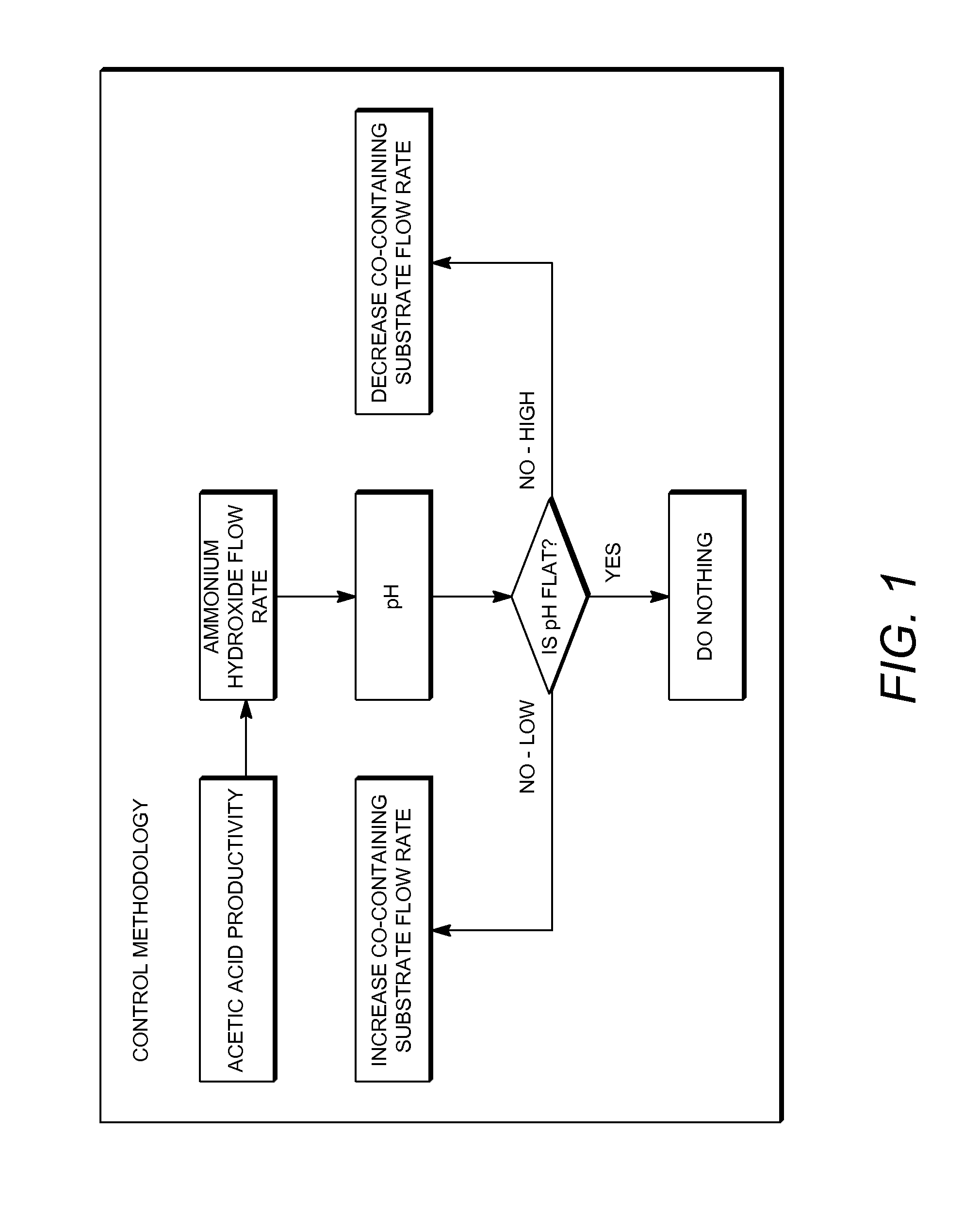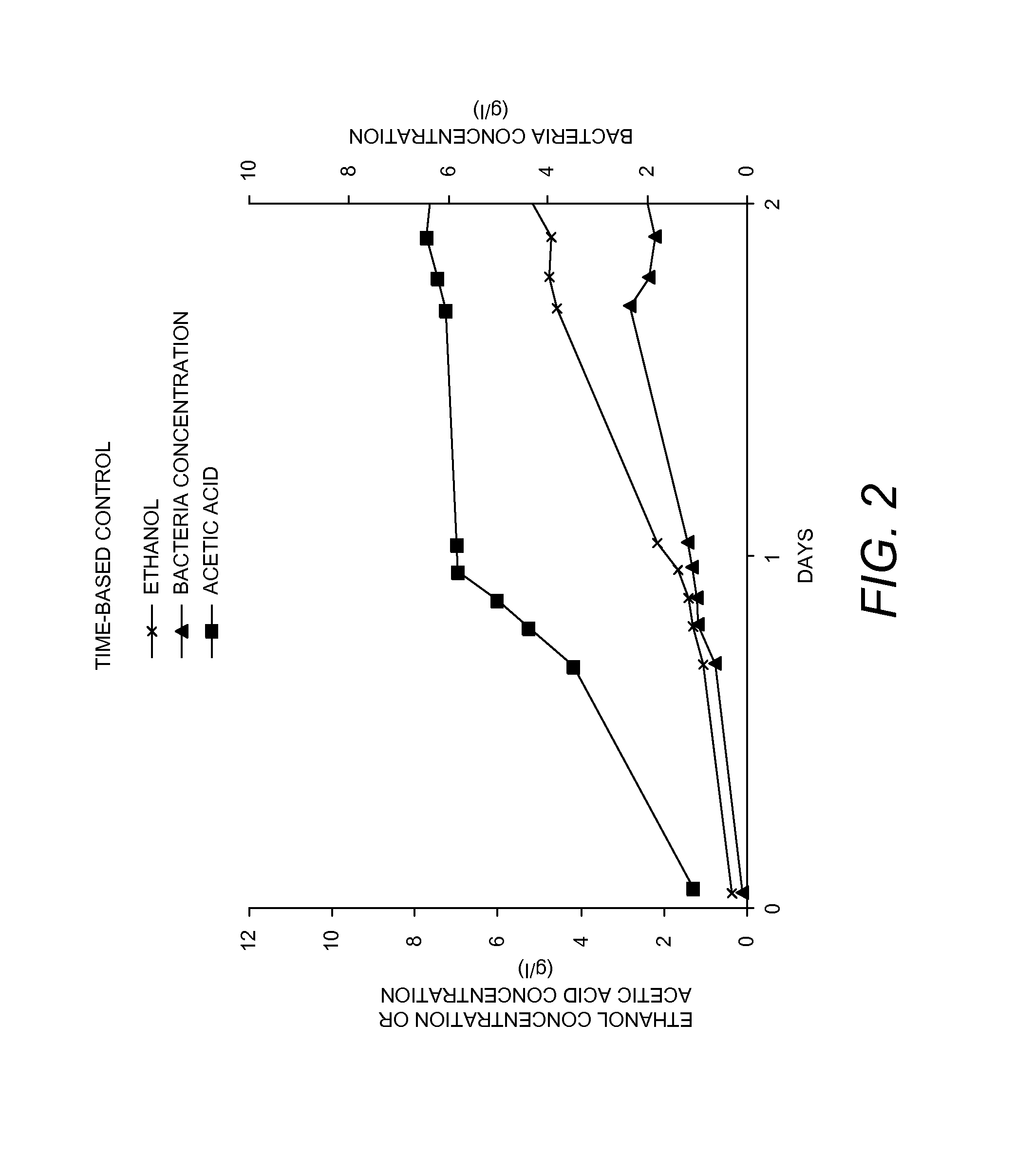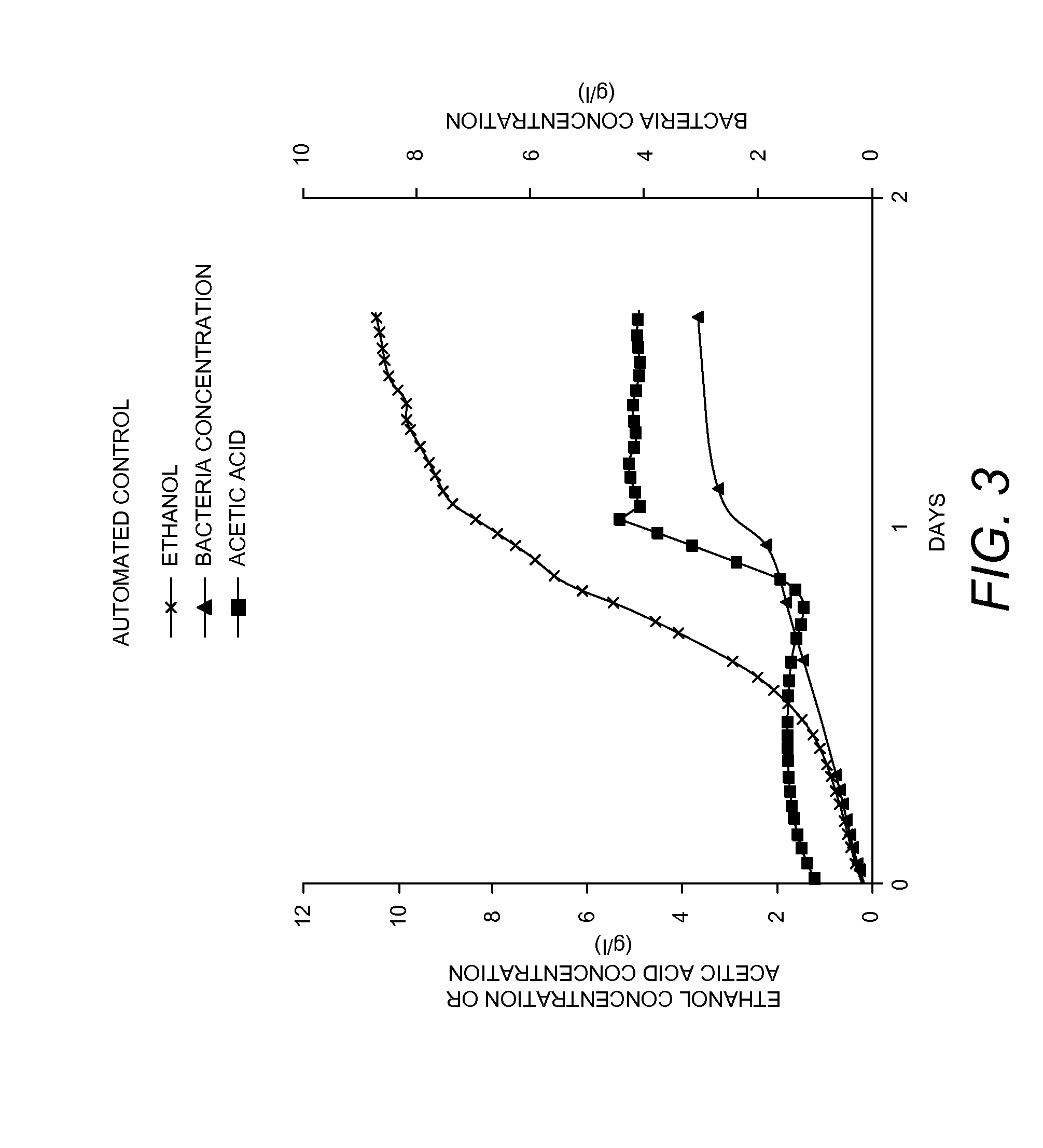Control of bioreactor processes
- Summary
- Abstract
- Description
- Claims
- Application Information
AI Technical Summary
Benefits of technology
Problems solved by technology
Method used
Image
Examples
example 1
Comparison of Conventional “Time-Based” Startup and Inventive “Automated” Startup
[0059]A biological process for the conversion CO to ethanol was started by inoculating a bioreactor with culture medium containing C. ljundahlii. The pH of culture medium began to drop as acetic acid was produced. CO-containing substrate and ammonium hydroxide feeds to the bioreactor were started when the pH of the culture medium reached 5.0. The flow rate of the CO-containing substrate over the startup was governed by a conventional, predetermined time-based profile, in which the avoidance of CO oversupply was the main objective. For comparative purposes, the same process was started using a control methodology as described herein, in which the flow rate of the ammonium hydroxide was controlled based on the concentration of acetate (in the form of acetic acid) in the culture medium, measured automatically and periodically by HPLC. The progress of these comparative startups is shown in FIGS. 2 and 3, wh...
example 2
Automated Startup—Control of NH4OH Flow Based on Measured Concentrations
[0062]A biological process for the conversion CO to ethanol was started by inoculating a bioreactor with culture medium containing C. ljundahlii. The pH of culture medium began to drop as acetic acid was produced. CO-containing substrate and ammonium hydroxide feeds to the bioreactor were started when the pH of the culture medium reached 5.0. Based on the measured bacteria concentration in the bioreactor, an acetate (acetic acid) target concentration and a diluent flow rate were determined according to the following equations:
Acetate target concentration=A1·BIOCONmv+B1
Diluent flow rate=C1(BIOCONmv)
[0063]Wherein A1, B1, and C1 were determined empirically from information obtained in prior processes. Based on the acetic acid concentration measured using the on-line HPLC, the flow rate of ammonium hydroxide was adjusted automatically, i.e., increased in order to increase the acetic acid production by the bacteria...
example 3
Automated Startup—Based on Measured pH and CO-Containing Substrate Flow Only
[0065]Based on previous start-up data for biological processes, as described in Example 1, in which CO was converted to ethanol by feeding it to a culture medium containing C. ljundahlii, relationships were established between a given bacterial concentration in the reactor, a corresponding flow rate of the CO-containing substrate of a given composition required that to yield a target acetic acid productivity, and a required ammonium hydroxide flow rate needed to maintain the culture medium pH at a given target. These relationships were as follows:
W·BIOPROD+X·METPROD=NEUTFLO=Y·COFLO+Z
[0066]wherein BIOPROD, METPROD, NEUTFLO, and COFLO represented, respectively, the bacteria (biomass) productivity, the acetic acid (acetate) productivity, the NH4OH flow rate to the bioreactor, and the CO-containing substrate flow rate to the bioreactor. The factors W, X, Y and Z were determined empirically (using linear regress...
PUM
 Login to View More
Login to View More Abstract
Description
Claims
Application Information
 Login to View More
Login to View More - R&D
- Intellectual Property
- Life Sciences
- Materials
- Tech Scout
- Unparalleled Data Quality
- Higher Quality Content
- 60% Fewer Hallucinations
Browse by: Latest US Patents, China's latest patents, Technical Efficacy Thesaurus, Application Domain, Technology Topic, Popular Technical Reports.
© 2025 PatSnap. All rights reserved.Legal|Privacy policy|Modern Slavery Act Transparency Statement|Sitemap|About US| Contact US: help@patsnap.com



